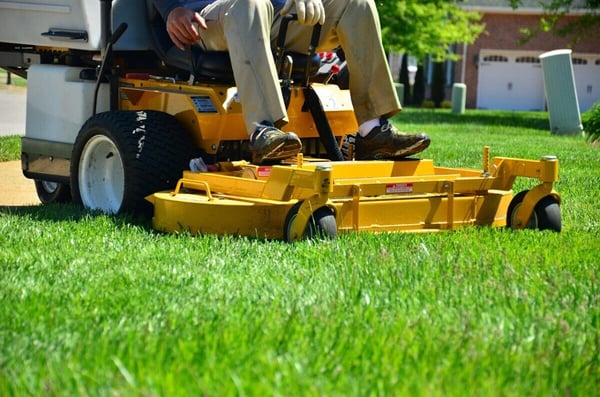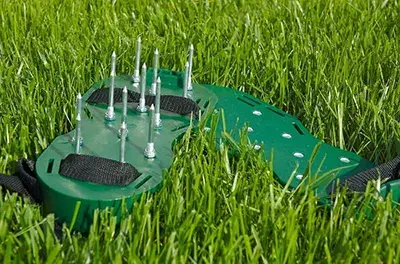Drought stress causes plants to exhibit certain tell-tale symptoms, such as wilting, chlorosis (yellowing of leaves due to a lack of chlorophyll), and reduced growth. This condition can adversely affect plant development, productivity, and overall health.
Researchers recommend strategies to combat drought stress effectively, including using Iron Oxide Nanoparticles and Arbuscular Mycorrhizal Fungi (AMF). If you want to implement these approaches and other effective strategies to deal with heat stress, contact lawn care specialists to learn more.
In this guide, we’ll cover the steps to diagnosing heat stress. After identifying the symptoms and the process of diagnosing drought stress, you’ll learn about its impact on your turf and the best practices for a healthy lawn.
Why is My Grass Dead? Understanding the Impact of Drought Stress
Heat stress occurs when high temperatures exceed the optimal grass growth and development range. The optimal temperatures will vary from one area to the other. The excess temperature negatively impacts the health of your lawn.
Several factors contribute to heat stress, including the following:
- High Temperatures: When the temperature in your area rises above what the grass can tolerate, the turf grass in your lawn can’t effectively carry out essential processes like photosynthesis. This excessive heat condition leads to stress on the grass.
- Direct Sunlight: Exposure to intense, direct sunlight can cause your lawn’s surface temperatures to soar. This increases evaporation rates, drying out the soil and increasing the heat absorbed by the grass.
- Soil Moisture Depletion: It is crucial to pay attention to daytime temperatures in your area so you can monitor the amount of soil moisture on your lawn. During hot weather, soil moisture evaporates quickly, leaving the soil dry and unable to provide adequate hydration to the grassroots.
The effects of heat stress on grass and soil are significant. Pay attention to the following symptoms when diagnosing heat stress:
- Grass Damage: High temperatures cause grass blades to wilt and turn brown as they lose moisture. This condition makes the grass more susceptible to diseases and pests.
- Reduced Growth: When diagnosing drought stress, pay attention to the growth of your turfgrass. Remember that heat stress inhibits grass growth, resulting in thinning and patchy areas on the lawn.
- Soil Compaction: Dry soil tends to become compacted, hindering grassroot growth and nutrient uptake.
Understanding these effects when diagnosing heat stress is important. This will help you implement proper lawn care practices and prevent heat stress from damaging your lawn.
Why Heat Stress Is Bad for Your Lawn
Heat stress can wreak havoc on the health and appearance of your lawn. Here are some of the detrimental effects it can have:
- Reduced Growth: High temperatures hinder grass growth and development. When heat stresses the grass, it redirects its energy away from growth toward survival mechanisms, resulting in slower growth rates. This leads to thinning of the lawn and can create bare patches.
- Increased Vulnerability to Diseases: Heat-stressed grass becomes more susceptible to diseases. The weakened condition of the grass makes it easier for pathogens to invade, leading to diseases like brown patches and fungal infections. If left untreated, these diseases can cause extensive damage to your lawn.
- Pest Infestation: Heat-stressed lawns are also more attractive to pests. Insects like chinch bugs and armyworms thrive in hot, dry conditions. They can cause significant damage to the grass by feeding on it and creating bare spots. Additionally, stressed grass cannot defend itself against pest attacks, making the lawn more vulnerable.
Thinning and Discoloration: Heat stress causes grass blades to wilt and turn yellow or brown, giving the lawn an unhealthy and unattractive appearance. Thinning the grass canopy also makes the lawn more susceptible to weed invasion, compromising its health and aesthetic appeal.

These detrimental effects highlight the importance of implementing proper lawn care practices to mitigate heat stress, such as maximizing water utilization, lawn fertilization, and soil aeration. Taking proactive measures can help your lawn withstand hot weather and maintain its health and beauty during the hot summer months.
Tips for Protecting Your Lawn from Heat Stress
After diagnosing drought stress, protecting your lawn during hot weather is crucial to maintaining your yard’s aesthetics. Here are some tips to help your lawn withstand heat stress:
Watering Schedule
Choose the optimal watering schedule for your area:
- Deep Watering: To encourage deep root growth, water your lawn deeply and infrequently. Deep roots are more resilient to heat stress.
- Early Morning Watering: Water your lawn early in the morning to minimize water loss due to evaporation and ensure the grass has enough moisture throughout the day.
While keeping your lawn hydrated is important, avoid overwatering as it can lead to shallow root growth and increase susceptibility to disease.
Choose the Right Grass Type
North Texas is known for its hot weather, so it is crucial to select heat-tolerant grass species. Heat-tolerant grass types like Bermuda, Zoysia, and Tall Fescue are good options for hot Texas climates.
Provide Ample Shade
Plant trees and shrubs strategically to provide shade to your lawn. Shade helps reduce soil temperatures and minimizes water loss through evaporation. You can also install shade sails, pergolas, or umbrellas in areas with limited natural shade. These structures can temporarily relieve the sun’s heat during the hottest parts of the day.

Mowing Practices
Set your lawn mower blades to a higher setting to leave grass taller. Taller grass shades the soil, reduces water evaporation, and promotes deeper root growth. After mowing, leave grass clippings on the lawn to provide a natural mulch layer that helps retain moisture and cool the soil.
Proper Soil Care
Aerating the soil improves air circulation and water penetration, helping grassroots access nutrients and moisture more effectively. In addition, spread a layer of organic mulch, such as compost or wood chips, around trees and shrubs to insulate the soil, retain moisture, and regulate soil temperature.
Work with Lawn Care Specialists in Texas
Emerald Lawns is a local lawn fertilizer company with a solid reputation for helping property owners in San Antonio, Temple, Austin, and the Dallas Fort Worth Area care for their lawns. We understand your time is precious, so we provide fast solutions while delivering outstanding results. Call 888-356-7717 or reach us online to get a quote.





